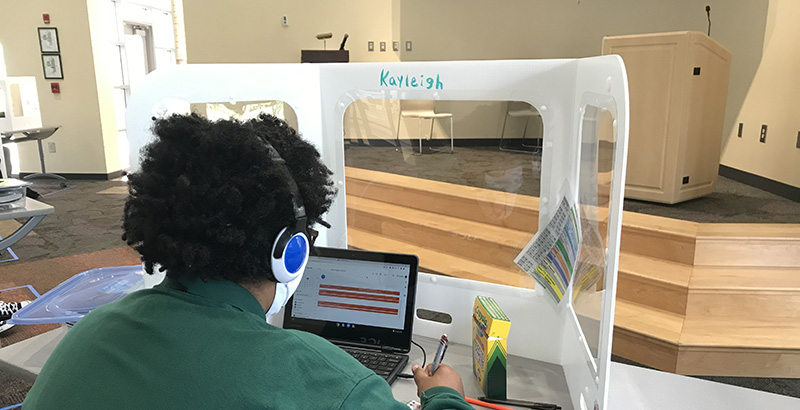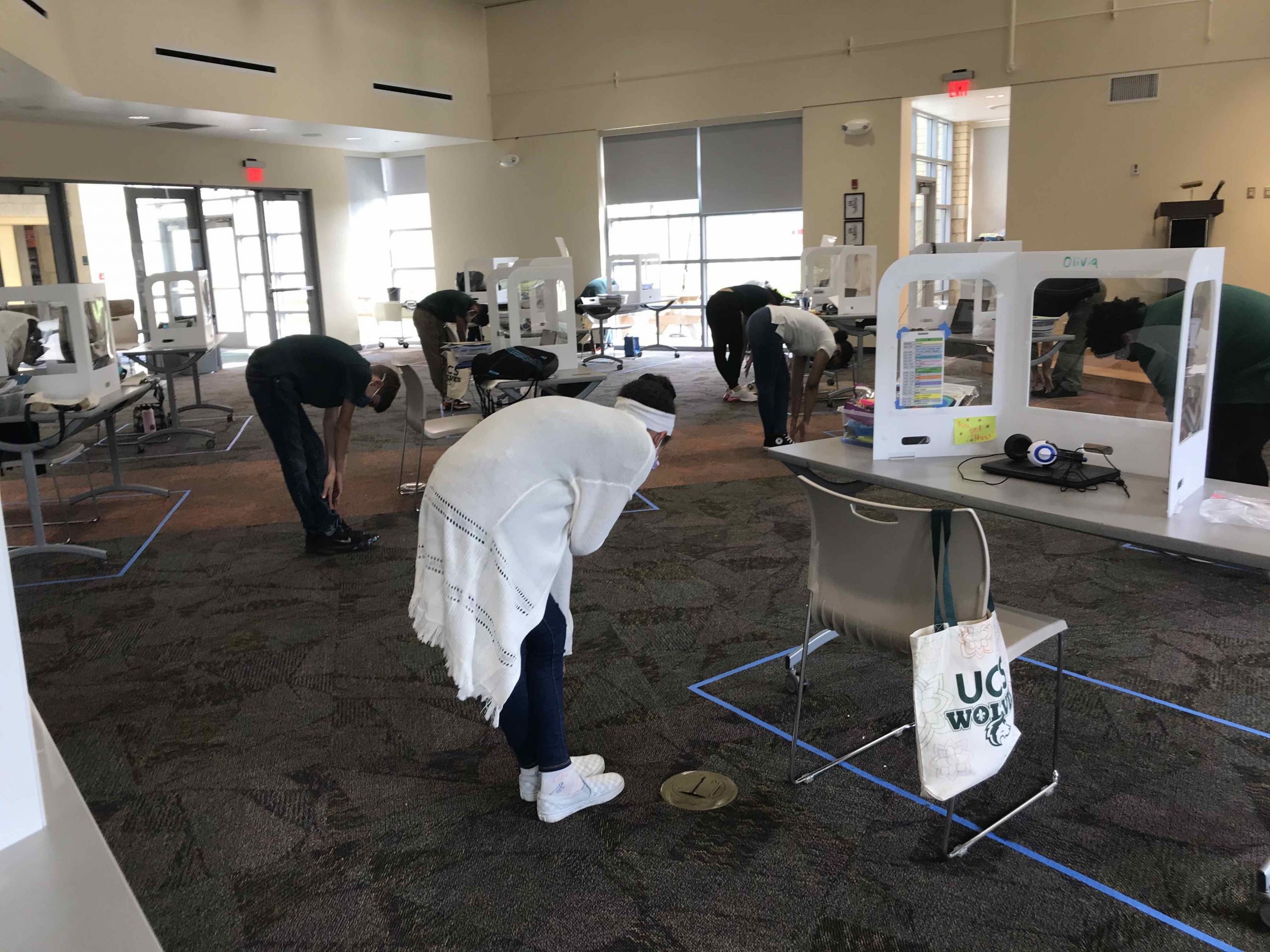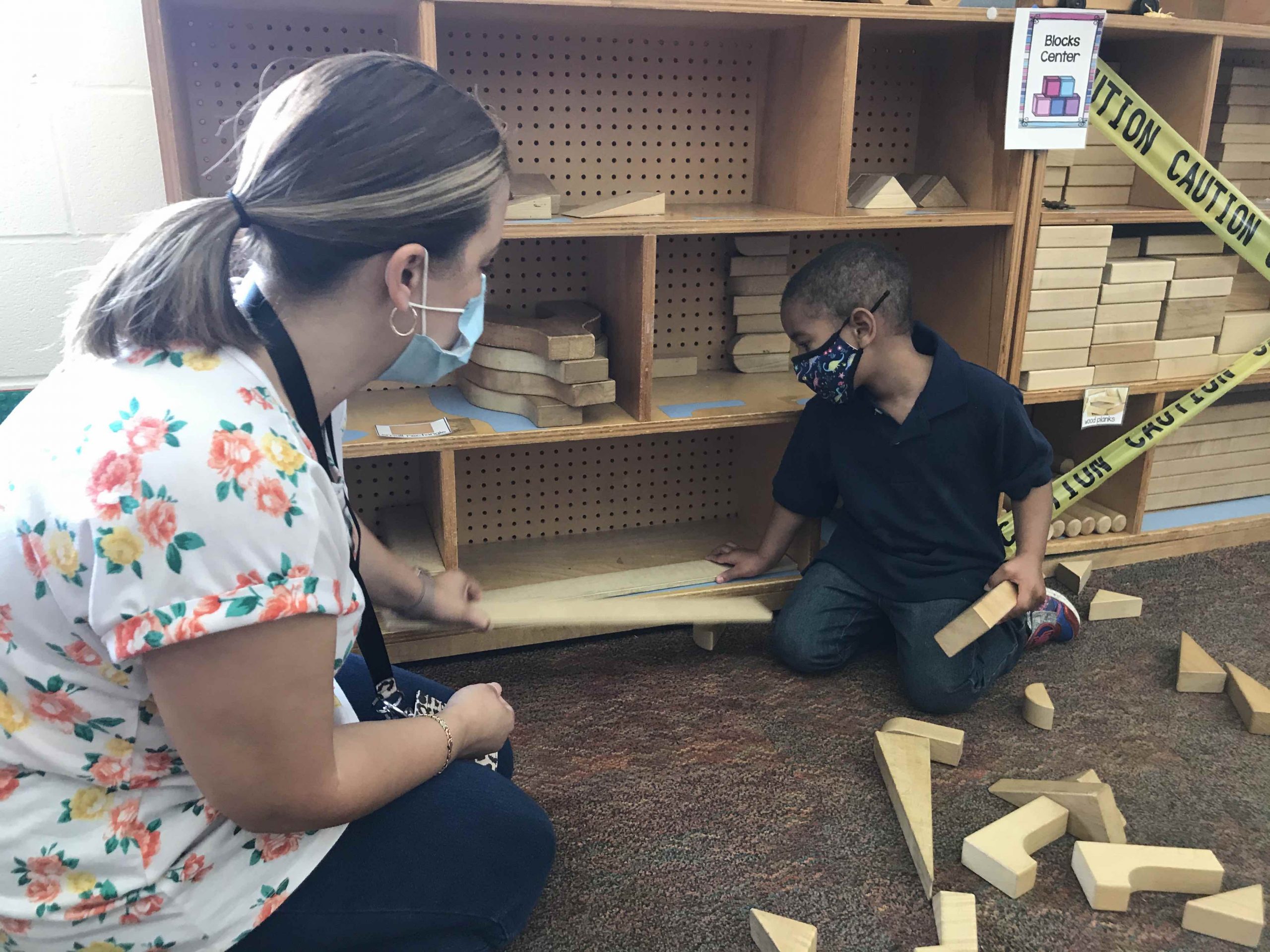An Unusual Form of Hybrid: Private School Students Take ‘Remote’ Classes at School

Will Garland is taking all his classes online this fall for COVID-19 safety reasons, like so many students across the country. But the eighth grader’s lessons at Cleveland’s Urban Community School aren’t exactly remote.
He’s still coming to school every day to take his online classes, in-person and with his classmates.
While most of the education world agonizes over whether students should take classes online or at school, this private urban Christian school is letting its older students do both at the same time.
The result is an unusual form of hybrid learning that resembles the remote learning centers that have started in Cleveland and other cities and one that allows students to see classmates in a controlled setting, while also allowing teachers to stay home.
It also allows Urban Community School to bring back as many students as possible to classrooms every day, while limiting COVID-19 danger. That was a priority for the school, which has high levels of poverty and families without reliable child care at home.
“We think the health risks to a lot of our kids at home really needed to be considered,” said Tom Gill, the school’s president. Roughly two-thirds of the school’s 560 kindergarten through eighth grade students are coming to school every day.
“Our families need somewhere to go,” Gill said, even though having kids at school adds health risks. “And we were really pushing to get kids in the building because we want to get eyes on kids. We were really concerned.”
On a typical day, Garland and his classmates sit several feet apart in a large meeting room, with foldable “shields” in front of them to contain breath and any possible infection.
There’s no teacher in the room and there are no lessons being taught here. The teachers are all at home, teaching via webcam. Garland and his classmates take their classes on their laptops, just like other students are doing from home.
Garland said he could have stayed at home to do his lessons, but chose to come to school “rather than be at home in my room” to be around other students and to be able to talk, masked, about what they are learning.
“[My mom] gave me a choice and I decided to come here,” he said. “It’s nice to be able to see my friends where I can socialize and be in an environment where everything’s in order and there’s a schedule.”
About half the school districts in the country, including the entire Cleveland Municipal School District, closed schools and moved classes online this fall out because of COVID-19 health concerns. While some opened with traditional in-person classes, many cobbled together a mix of online and in-person classes, often with very different forms, under the catch-all label “hybrid.”
Urban Community School’s plan is one approach of trying to meet the needs of students, teachers and families. It also avoids an increasing conflict between teachers unions and schools when teachers have to teach students in the classroom with them and also stream those lessons to students at home.
The Cleveland Teachers Union, which represents teachers in the local school district but not private schools like Urban Community School, has already raised objections to such “concurrent” or “simultaneous” teaching plans, even before the district announces late this week whether any students will return to schools later this fall.

Gill said polls over the summer showed about 75 percent of his teachers and parents were willing to return to school, with precautions.
So the school created two plans, one for kindergarten through fifth grade and one for sixth through eighth grade. Both plans allow parents to keep kids at home if they prefer, but the school felt a need to bring as many students to school as it could.
More than 70 percent of Urban Community School’s 560 students qualify for free or reduced price lunch, a measure of poverty. Many are immigrants, coming from 10 different countries. And Gill said most parents work and can’t be home for their children. That’s on top of Cleveland being the worst connected city to the internet in the country.
So the school opened up for in-person classes with teachers for students in kindergarten through fifth grade. Roughly 200 of the 300 students in those grades come to school every day to learn with teachers who chose to be there, while the other third take online classes with teachers who wanted to work from home.

The older students needed a different approach. Though many teachers were willing to return to school to teach, the middle school grades have different teachers teach different subjects, so it is harder to limit the number of adults mingling with students. And health risks are generally considered higher for older students.
So the school decided to have teachers present lessons online. Because younger students took over some middle school classrooms to spread out more, the older students moved to large areas like the library or meeting rooms.The school then hired additional “teaching assistants” to monitor the rooms and help students with technical issues.
Though the arrangement resembles the learning centers, sometimes called “pods” or “learning labs,” created nationally for students to do online classes, Gill doesn’t look at these spaces as learning centers for students, but just as the school’s in-person option for them.
So far, he said, students are learning. A recent student survey showed almost all students connect to all classes without trouble, are completing all or most of their work, and feel a connection to teachers and classmates.
Though one teaching assistant has been diagnosed with COVID-19 since school started, that class went home for online classes right away.
“No spread,” he said. “The plan is working.”
The school is about to start surveying parents about how it should handle classes from January on. Students say they like this approach and hope that it continues.
Amira Hamdan, another eighth grader who sits a few desks away from Garland, prefers being at school to take her classes, even if the teacher isn’t there.
“It’s easier to pay attention than sitting in your bed,” she said, worrying she would be distracted at home or lose track of her class schedule. “If I was at home, I’d miss some classes because I would know when to be on. Here they tell us.”
Get stories like these delivered straight to your inbox. Sign up for The 74 Newsletter

;)
